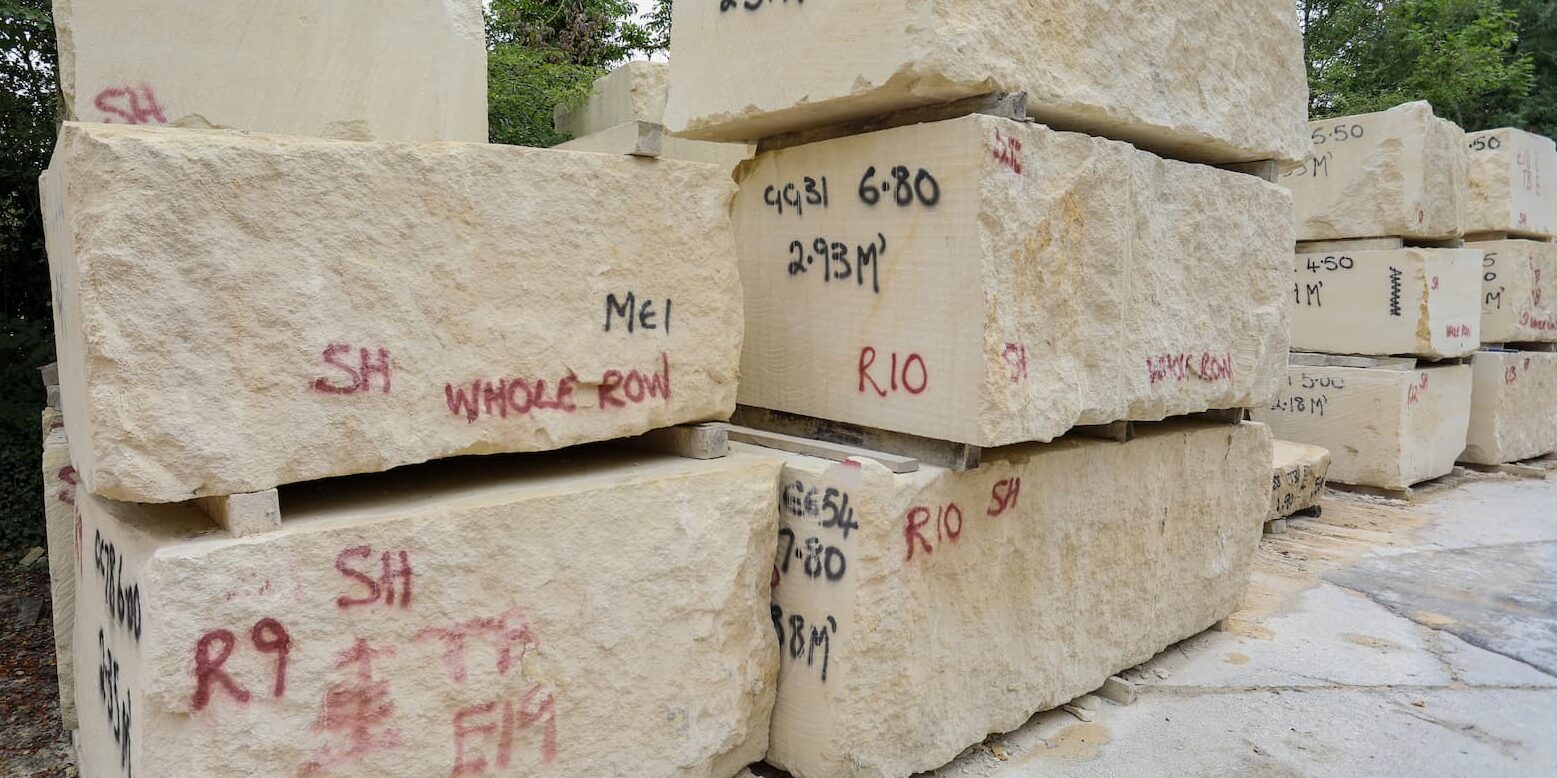What is Bath Stone?
Conjure images of grand and stately buildings such as the Royal Crescent and the Abbey in Bath, and you're envisaging Bath stone.
This softly honey-coloured stone with a unique texture evokes feelings of grandeur, history and quality. Indeed, we can thank Bath stone, in part, for Bath’s aesthetics and development that have led to it being a UNESCO World Heritage Site.
Bath stone is, in fact, sought-after beyond the South West’s most impressive buildings. It’s there to lend an edge of splendour and exclusivity within private homes in staircases and fireplaces, it’s the characteristic wall of dry-stone field boundaries in the Cotswolds, and it is popular in luxury hotels and business premises across the South of England and beyond.
Distinctive quality
Bath stone is distinctive. Whilst we are most familiar with the honey colour, it comes in shades including greys and even blue. There are multiple different types, and some, like the Stoke Ground Bath stone, are higher-quality and more appealing. However, what all Bath stone has in common is the characteristic texture.
When you look at Bath stone close up, you see myriad grain-like marine sediments or ooliths. These small egg-shaped grains give this limestone an unusual and attractive appearance.
From the days when the Romans used Bath stone in the iconic baths to its modern-day use, Bath stone stands out as unique. This unique look makes it impressive as a building material in terms of aesthetics and structure, but what is Bath stone, and why is it so special?
The history of Bath stone
We must step back in time, well beyond even the Romans, to truly understand Bath stone.
Without wishing to dull the imagination with a dry geology lesson, it is nonetheless essential to understand a brief history of this remarkable stone.
Way before the British Isles even existed, when the large landmass of Pangea characterised the earth, the land that would someday become Somerset and Wiltshire sat about where the modern-day Sahara desert is. Tropical Jurassic seas submerged Pangea. The sea bed was made of white limey sand with tiny, broken shells.
These seas were often very shallow, forming limestone due to rolling currents taking the marine sediment and buffering it into rounded egg-like shapes. These gradually accumulated a layer of calcium carbonate on top (ooliths). Over time, these pushed together under the pressure of additional layers of sediment, creating rocks where the pattern of the ooliths is still visible.
Around 25 million years ago, a monumental shunt in the landmasses that were becoming Europe had a more subtle effect on southern English geography. Here, the shunt tilted our land gently southeast. As such, Bath stone, once created so much further south and hidden under other layers of sediment, became shallow and exposed in the hills around what would become Bath city and the Avon valley. We find Bath stone in strata (layers) called ‘beds’ which are primarily near-horizontal. This meant that the Romans and future generations could easily access the stone from opencast pits sustainably and unobtrusively.
The different types of Bath stone
Owing to Bath Stone’s monumentally long history and formation, there are differences between different beds of Bath Stone. As such, some are more sought-after than others.
Bath Stone has been mined at several different quarries over the years, including the Stoke Hill mine at Limpley Stoke which the Bath Stone Company runs, and the stone that comes from these different sites is all oolithic limestone. However, it isn’t all the same.
The strata at the different quarries vary enormously in various ways. The stone’s colour and the size of the ooliths (affecting the uniformity of texture) are notable variations. However, another essential variation for those interested in using the Bath stone is the depth of the layer. Typically, the band of stone is around 300mm to 900mm. However, Stoke Ground Bath stone is sometimes available up to 1.3m and consistently available up to 1.0m.

Why does this matter? When using Bath stone in a building, it is best to position it like it was in the earth. Stoke Ground Bath stone enables architects to use much deeper blocks of stone. This depth adds an exclusive allure that looks grand and exquisite. It’s the understated luxury that many seek in building design.
Alongside this, the uniform texture and fine detail make Stoke Ground Bath stone popular for eye-catching features such as fireplaces. Furthermore, Stoke Ground Bath stone is perhaps the most hard-wearing of all the Bath stones, being the only local stone to Bath with a consistent freeze-thaw cycle rating of 56 for our Base or weathering bed. Even our Top Bed is more frost resistant than most other Bath stones available and has been proved over centuries of use.
Impressively different
Stoke Ground Bath stone is one of the most luxurious, hardest wearing and most consistently beautiful Bath stone. Please find out more about our Bath Stone products.




